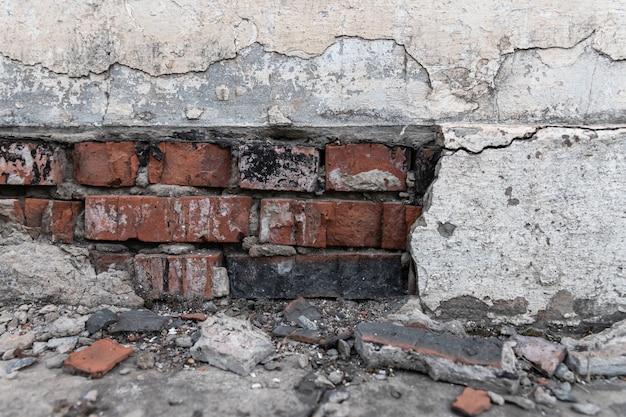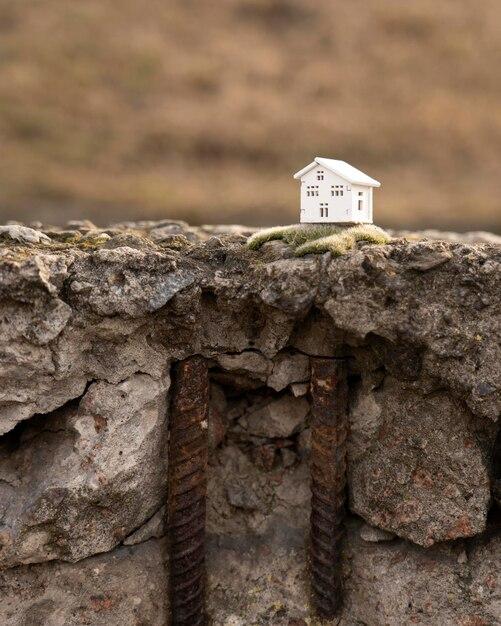If you own a home, you know that unexpected damages and repairs can quickly become a headache. One common concern is cracked walls. Whether they appear as hairline cracks or larger fissures, these structural imperfections can be a cause for worry. So, the big question is: does home insurance cover cracked walls? In this blog post, we will delve into this topic and provide you with a comprehensive understanding of what your home insurance policy may or may not cover.
While homeowners insurance is designed to protect you from various perils, such as fire, theft, and natural disasters, coverage for cracked walls can be a bit trickier. Generally, insurance providers consider structural damage to be covered, but it’s important to determine if the cracks in your walls qualify as such. Understanding the difference between structural and non-structural cracks is crucial in determining whether you can make a claim and have the necessary coverage.
So, if you’re curious about whether your home insurance will foot the bill for your cracked walls, continue reading to learn what to look out for, how to identify serious cracks, and when to be concerned. We’ll also touch on what is considered structural damage, how to spot it, and steps you can take to minimize the risk of a house collapse. Don’t let those cracks in the walls leave you uncertain and worried – let’s dive into the world of home insurance and cracked walls to get some clarity on this important topic.
Does Home Insurance Cover Cracked Walls
Have you ever noticed a crack in the walls of your home and wondered, “Does my home insurance cover this?” Well, you’re not alone! Cracked walls can be a common issue for homeowners, and it’s important to know if you’re covered in case of any unexpected surprises. In this section, we’ll delve into the intricacies of home insurance coverage and find out if cracked walls make the cut.
The Foundations of Home Insurance
When it comes to home insurance, coverage can vary depending on the policy and the specific circumstances. Generally, home insurance is designed to protect homeowners from unexpected events like fire, theft, or natural disasters. However, not all types of damage are always covered, and this is where cracked walls can leave us scratching our heads.
Unpacking Coverage Options
Most standard home insurance policies cover certain types of perils, such as fire or water damage. However, these policies may not cover damage that arises from everyday wear and tear or lack of maintenance. This is where the issue of cracked walls often arises.
Wear and Tear vs. Sudden and Accidental
When it comes to cracked walls, the key factor that determines whether or not you’re covered is the cause of the cracks. Home insurance typically covers sudden and accidental incidents, such as a tree falling on your house during a storm. However, cracks that result from long-term wear and tear or pre-existing structural issues may not be covered.
Understanding Exclusions and Deductibles
It’s important to carefully review your home insurance policy to understand any exclusions or limitations related to cracked walls. Some policies may exclude coverage for cracks caused by settling, structural defects, or gradual deterioration. Additionally, you may need to consider your deductible – the amount you’re responsible for paying before your insurance kicks in. If the cost of repairing the cracked walls is lower than your deductible, filing a claim may not make financial sense.
Seeking Professional Advice
When dealing with cracked walls or any other structural issues in your home, it’s wise to consult with a professional. An experienced contractor or structural engineer can assess the cause and severity of the cracks, providing you with valuable insights to navigate the insurance landscape.
Prevention is Better Than Insurance
While home insurance can provide financial protection in times of unexpected damage, it’s always better to take preventive measures. Regular home maintenance, such as inspecting your walls for cracks and addressing them promptly, can help prevent bigger and costlier issues down the line. Remember, a little prevention can go a long way in avoiding headaches.
Taking Action
If you discover cracks in your walls, don’t panic just yet! Start by reviewing your home insurance policy to understand your coverage. If you’re unsure or have concerns, reach out to your insurance provider for clarification. Remember, it’s always better to be proactive and informed when it comes to protecting your most valuable asset – your home.
FAQ: Does Home Insurance Cover Cracked Walls
So, you’ve noticed some cracks in your walls, and you’re wondering if your home insurance has got your back. Well, worry not! We’re here to answer all your burning questions about cracked walls and home insurance coverage. Let’s dive right in and crack these questions wide open!
1. Does filing a home insurance claim hurt you
Filing a home insurance claim doesn’t hurt you per se, but it’s important to understand that excessive claims can impact your future premiums. Your insurance history plays a role in determining your rates, so it’s always a good idea to evaluate the seriousness of the damage before rushing to file a claim.
2. What is considered structural damage to a house
Structural damage to a house refers to significant harm caused to the load-bearing elements, affecting the stability and integrity of the entire structure. This includes damage to the foundation, walls, roof, and other essential components that support your home. Cracked walls can sometimes be an indication of structural damage, so it’s crucial to have them properly assessed.
3. How do you know if a wall crack is serious
Determining the seriousness of a wall crack requires a keen eye and some detective skills. Factors like length, width, direction, and other accompanying signs will help you evaluate the severity. Horizontal cracks, especially wider than a quarter inch, or those accompanied by bowing walls, may indicate a more serious structural issue. When in doubt, it’s best to consult a professional.
4. Are vertical cracks in walls bad
Vertical cracks in walls are generally less concerning than horizontal cracks. In many cases, vertical cracks result from the natural settling of a house over time, which is normal. However, if the crack is wider or shows signs of movement, it’s wise to have it inspected by an expert. Remember, cracks may look innocent, but they can sometimes be sneaky!
5. Can I claim water damage on home insurance
Water damage coverage varies depending on the cause. Sudden and accidental water damage, such as a burst pipe, is typically covered by most home insurance policies. However, damages resulting from poor maintenance or gradual water seepage may not be covered. It’s important to review your policy or consult your insurance provider to understand your specific coverage.
6. Is cracked brickwork covered by insurance
Whether cracked brickwork is covered by insurance depends on the cause of the cracks. If the cracks are due to sudden and unforeseen circumstances like a fire or a falling tree, it’s likely covered. However, if the cracks result from wear and tear, faulty construction, or earth movement, they may be considered maintenance issues and not covered. It’s always best to check the details of your policy.
7. Does homeowners insurance cover cracks in walls
Generally, homeowners insurance focuses more on sudden and accidental damages rather than regular wear and tear. Cracks in walls that occur gradually over time due to settling or aging of the house may not be covered. However, if the cracks result from covered perils like a fire, vandalism, or severe weather conditions, you may have a case for insurance coverage. Don’t hesitate to reach out to your insurance provider for clarification.
8. Can a house collapse from cracks
While small cracks are usually harmless, certain types of cracks, such as those accompanied by movement, can potentially lead to serious structural damage. Fortunately, catastrophic collapses are rare and often preventable with prompt attention and necessary repairs. Remember, house collapses are more common in horror movies than in real life!
9. When should I be concerned about cracks in walls
It’s always better to be safe than sorry! If you notice significant cracks, especially those accompanied by other warning signs like sticking doors, uneven floors, or visible leaning, it’s essential to address the issue promptly. In such cases, it’s wise to consult a qualified professional who can assess the situation and provide guidance on any necessary repairs.
10. What is the first step to consider when buying homeowners insurance
When purchasing homeowners insurance, your first step should be to assess your needs and research different insurance companies. Determine the level of coverage you require for your property and personal belongings. It’s also crucial to read and understand the policy terms and exclusions, ensuring you have adequate protection. Don’t hesitate to seek advice from an insurance agent to navigate through the intricacies of choosing the right policy.
11. How can you tell if a crack is structural
Structural cracks are often characterized by their width, direction, and accompanying signs throughout your home. Horizontal cracks, widening cracks, or cracks accompanied by doors or windows not closing properly may be indicators of structural issues. It’s advisable to have a professional inspect the cracks to determine if they are indeed structural and require immediate attention.
12. How do I know if my house has structural problems
Spotting structural problems can be tricky, but some crucial signs include uneven floors, sagging rooflines, cracks in the foundation, and doors or windows that don’t align properly. Excessive wall cracks or those accompanied by other warning signs can also be red flags. If you suspect structural problems, consult a reputable structural engineer or a certified home inspector who can assess your home’s condition accurately.
13. What is covered under house insurance
Home insurance typically covers various perils such as fire, theft, vandalism, and certain natural disasters, depending on your policy. It also commonly provides liability coverage in case someone is injured on your property. Additionally, policies may cover dwelling coverage, personal property, additional living expenses during repairs, and medical payments. Remember to review your specific policy to understand the scope of coverage provided.
14. What is not covered by homeowners insurance
Homeowners insurance usually excludes intentional acts, normal wear and tear, earthquakes, floods, and certain types of personal property such as jewelry or collectibles. Additionally, maintenance-related issues, like fixing those cracks caused by Father Time’s passage, are generally not covered. Always read your policy thoroughly to know the exclusions and consider additional coverage if needed.
Wrapping Up Crack-lingly Good Knowledge
Now that you’ve cracked the code on whether home insurance covers those pesky wall cracks, you can make informed decisions about protecting your home and wallet. Remember, assessing the seriousness of cracks is crucial, and professional help should not be overlooked. It’s always better to address any concerns promptly to prevent potential problems from widening further. Stay crack-free and worry-free, my friends!

